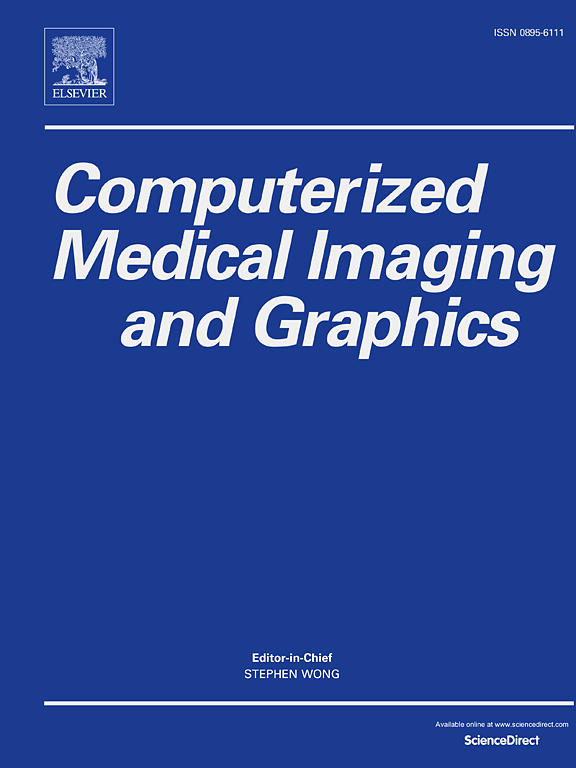基于语义导向生成对抗网络的冠状动脉ct血管造影钙脱影研究
IF 4.9
2区 医学
Q1 ENGINEERING, BIOMEDICAL
Computerized Medical Imaging and Graphics
Pub Date : 2025-02-24
DOI:10.1016/j.compmedimag.2025.102515
引用次数: 0
摘要
冠状动脉ct血管造影(CCTA)中钙化斑块产生的钙盛开伪影是放射科医生假阳性结果的重要因素。以往的研究大多集中在CT图像的一般降噪上,而在面对绽放伪影时,降噪效果有限。为了解决这个问题,我们设计了一个自动化的、健壮的、面向语义的对抗网络,充分利用钙化斑块作为CCTA中的语义区域。使用特征提取模块提取语义特征,并通过全局-局部融合模块、带有语义相似度模块的生成器和矩阵鉴别器实现语义特征。我们的网络的有效性在虚拟和临床数据集上都得到了验证。临床数据集包括372例CCTA和相应的冠状动脉造影(CAG)结果,在两位心脏放射科医生(分别有10年和21年经验)的协助下进行临床评估。该方法有效地减少了三条主要冠状动脉的伪影,显著提高了冠状动脉狭窄诊断的特异性和阳性预测值。本文章由计算机程序翻译,如有差异,请以英文原文为准。
Calcium deblooming in coronary computed tomography angiography via semantic-oriented generative adversarial network
Calcium blooming artifact produced by calcified plaque in coronary computed tomography angiography (CCTA) is a significant contributor to false-positive results for radiologists. Most previous research focused on general noise reduction of CT images, while performance was limited when facing the blooming artifact. To address this problem, we designed an automated and robust semantics-oriented adversarial network that fully exploits the calcified plaques as semantic regions in the CCTA. The semantic features were extracted using a feature extraction module and implemented through a global–local fusion module, a generator with a semantic similarity module, and a matrix discriminator. The effectiveness of our network was validated both on a virtual and a clinical dataset. The clinical dataset consists of 372 CCTA and corresponding coronary angiogram (CAG) results, with the assistance of two cardiac radiologists (with 10 and 21 years of experience) for clinical evaluation. The proposed method effectively reduces artifacts for three major coronary arteries and significantly improves the specificity and positive predictive value for the diagnosis of coronary stenosis.
求助全文
通过发布文献求助,成功后即可免费获取论文全文。
去求助
来源期刊
CiteScore
10.70
自引率
3.50%
发文量
71
审稿时长
26 days
期刊介绍:
The purpose of the journal Computerized Medical Imaging and Graphics is to act as a source for the exchange of research results concerning algorithmic advances, development, and application of digital imaging in disease detection, diagnosis, intervention, prevention, precision medicine, and population health. Included in the journal will be articles on novel computerized imaging or visualization techniques, including artificial intelligence and machine learning, augmented reality for surgical planning and guidance, big biomedical data visualization, computer-aided diagnosis, computerized-robotic surgery, image-guided therapy, imaging scanning and reconstruction, mobile and tele-imaging, radiomics, and imaging integration and modeling with other information relevant to digital health. The types of biomedical imaging include: magnetic resonance, computed tomography, ultrasound, nuclear medicine, X-ray, microwave, optical and multi-photon microscopy, video and sensory imaging, and the convergence of biomedical images with other non-imaging datasets.

 求助内容:
求助内容: 应助结果提醒方式:
应助结果提醒方式:


